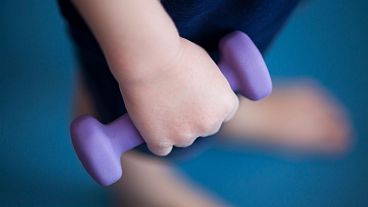TikTok content that is “pro-anorexia” can be damaging to young women’s body image, researchers said.
TikTok content that promotes disordered eating can impact young women’s perception of their bodies in under ten minutes, according to a study published this month.
Researchers from Charles Sturt University in Australia included 273 female TikTok users aged 18 to 28 who did not have eating disorders in an experimental study.
One group viewed seven to eight minutes of ‘neutral’ content, including scenes of nature, cooking videos, animals, and comedy clips.
Meanwhile, another group was exposed to seven to eight minutes of explicit, disordered eating content such as young women restricting their food, joking about disordered eating behaviours, starving themselves, and sharing weight loss tips.
The results published in the journal PLOS ONE found that this short time was enough to impact the viewers.
“We found that viewing just seven to eight minutes of pro-anorexia TikTok content significantly increased body dissatisfaction and internalisation of societal beauty standards,” senior lecturer Dr Rachel Hogg said in a statement.
“We know that most TikTok users spend much longer than this on TikTok each day, so the change we saw for the experimental group from pre- to post-test may be the tip of the iceberg in terms of the negative long-term impacts,” she added.
Researchers decided to focus on TikTok because of “its unique algorithm-based content delivery,” according to the university.
Focus on TikTok because of the platform’s algorithm
The main feature of TikTok's algorithm is the For You page where users see a continuous feed of videos tailored to their preferences.
The algorithm analyses each user's behaviour on the app, especially the videos they watch the longest, like, share, comment on, or rewatch.
By gathering and processing this data, the algorithm identifies patterns and trends in the user’s preferences and is supposed to deliver content that aligns with those interests.
TikTok's algorithm doesn’t just show users content they are familiar with, it also introduces them to new topics and creators by mixing familiar content with videos from accounts or topics the user hasn’t interacted with before in order to keep users engaged on the app.
“This means that someone who simply views a video on, say, meal preparation or a gym workout could then be shown pro-anorexia content on their ‘For You’ page,” Hogg said in a statement.
“Regardless of whether they are intentionally seeking out this content, there is every chance they will be subject to it,” she added.
Hogg observed that the control group also experienced some decrease in body image satisfaction, but suggested it might be due to the repeated administration of the ‘Body Image States Scale’ (BISS) within a short timeframe leading participants to pay more attention to their appearance than they typically would.
According to the European Institute for Gender Equality, girls report poorer mental health than boys. Nearly 47 per cent of girls experience mental health difficulties at least once a week, compared to 34 per cent of boys.
Body dissatisfaction, including concerns about weight and physical appearance, could contribute significantly to these mental health problems among young women, according to the 2021 Gender Equality Index.
An earlier report also showed a strong correlation between adolescent girls' concern about their physical appearance and their use of social media.
“Social media offers instant, quantifiable feedback coupled with idealised online imagery that may intersect with the value adolescents attribute to peer relationships and the sociocultural gender socialisation processes relevant to this period of development, creating the ‘perfect storm’ for young social media users, especially females,” Hogg said, adding there was a need for change to protect them from the harmful effects of the content.
Euronews reached out to TikTok for a comment on the study but did not immediately receive a response.















